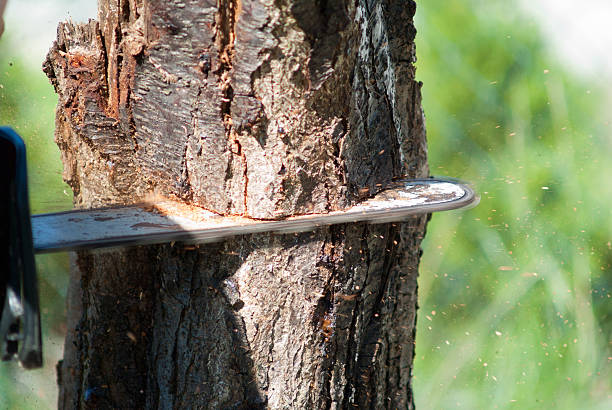Trees are invaluable for the environment, providing oxygen, habitat, and aesthetic beauty. However, there are situations where property owners may need to remove a tree without cutting it down. While intentional tree removal should be approached cautiously, it’s essential to understand methods that can be employed if necessary.
Girdling: A Gradual Approach
Girdling involves removing a strip of bark around the tree’s circumference, disrupting the flow of sap and nutrients. This method starves the tree, leading to its decline and eventual death. Girdling is a slow process that may take several months to a year, depending on the tree’s size and species. To execute this method, use a sharp blade to create a continuous band around the trunk, ensuring it penetrates the cambium layer. Monitor the tree’s health regularly as signs of decline become apparent.
Herbicides: Precision and Caution
Applying herbicides is another method that requires careful consideration and adherence to safety guidelines. Herbicides, when applied directly to the tree or injected into the trunk, can disrupt its physiological processes and lead to death.
However, this method must be cautiously approached, as it can have unintended consequences for surrounding vegetation and the environment. Seek advice from professionals and follow local regulations before using herbicides for tree removal.
Copper Nails: A Controversial Approach
Some individuals use copper nails to kill trees by hammering them into the trunk. The copper inhibits the tree’s ability to take up nutrients, eventually leading to its demise. While some consider this method, it is controversial, and its effectiveness is debated. It’s crucial to note that this approach may take considerable time, and the tree may still pose a risk during the process.
Ensuring Legal and Environmental Compliance
Before attempting any method of tree removal, it’s imperative to understand and comply with local laws and regulations. Intentional tree removal may be subject to legal restrictions, and certain methods, such as herbicide use, may have environmental implications. Consult with local authorities or arborists to ensure that your chosen method aligns with legal and environmental guidelines.
Consideration of Alternatives
While exploring methods to eliminate a tree without cutting it down, it’s essential to consider alternative solutions. Consultation with a certified arborist can provide insights into whether the tree can be safely preserved, possibly through pruning or other treatments. Trees contribute significantly to the environment, and removal should only be considered when necessary.
Professional Guidance
Given the complexities and potential consequences of intentionally killing a tree, seeking professional guidance is highly recommended. Certified arborists have the knowledge and experience to assess the situation, recommend appropriate action, and ensure compliance with legal and environmental standards. Professional assistance also reduces the risk of unintended damage to surrounding vegetation or ecosystems.
In conclusion, intentionally killing a tree without cutting it down is a process that requires careful consideration, planning, and adherence to legal and environmental guidelines.
While various methods exist, their effectiveness and ethical implications should be thoroughly researched before implementation. Consulted with certified arborists or local authorities whenever in doubt to ensure that the chosen approach aligns with the property owner’s and the environment’s best interests.

